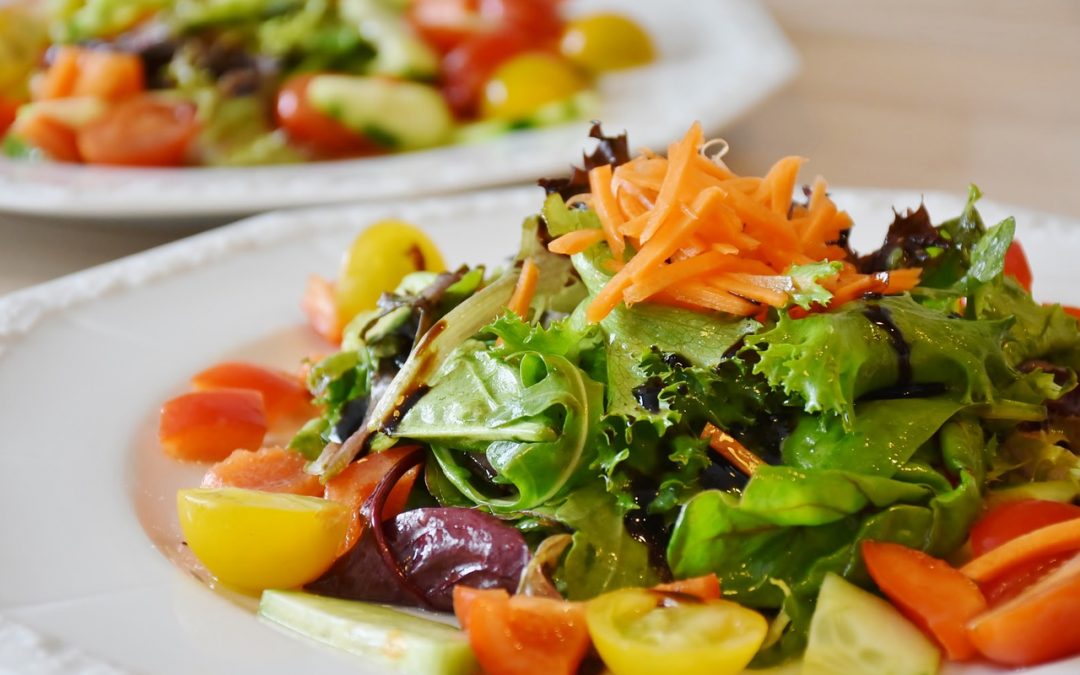


Promoting Healthy Living

Nourishing Grandkids
Nourishing Grandkids
It’s Monday and ten children, ages 5-12, are in the Community Room at Grandfamilies Place. They can’t wait until 4:30 pm to attend the healthy cooking class with their grandparents. Not only will they learn about eating healthy
 One by one, they stand in front of the class to introduce themselves and their grandparents. They are always asked a question. Today, they are asked, “What is your favorite fruit and why?”
One by one, they stand in front of the class to introduce themselves and their grandparents. They are always asked a question. Today, they are asked, “What is your favorite fruit and why?”
On this day, it’s 110 degrees. A perfect day for showing everyone how to make smoothies. But first, the children will make almond milk. The almonds have soaked for six hours. After the children make the almond milk, they blend it with various fruits and dates to make a refreshing drink. And they learn how to plate the smoothies and serve their grandparents.
These healthy cooking classes have created a significant impact by accomplishing the following goals:
- broadening the participants’ experience with healthy foods
- elevating the children’s confidence
- drawing the children out of their shells
- socializing the children who can now talk to their cousins about what they learned in class
- teaching the children to work as a team and to take turns
- improving the children’s sharing and caring
- enabling both the children and grandparents to make friends and form relationships
- having children look forward to serving their grandparents
- hearing the adults often comment to each other how much the children’s public speaking has improved
- ensuring that the children eat what they prepare by involving them in the food preparation(Thus, they are eating more fruits and vegetables.)
- ensuring that grandparents eat fruit and vegetables and do not run out of food at the end of the month because they receive fruit and vegetables at every class.
We thank our sponsors that make this program possible throughout the year, African American Women’s Giving and Empowerment Circle, Carstens Family Funds and State Farm.

How To Improve Your COPD Symptoms
How To Improve Your COPD Symptoms
Difficulty breathing is one of the most alarming and uncomfortable symptoms of Chronic Obstructive Pulmonary Disease. Modifying a few daily behaviors can be an effective way to alleviate symptoms of COPD. Here are a few things you can try that may help.
Avoid smoke and chemicals with strong fumes
According to the American Lung Association, smoking causes 90% of COPD deaths. If you currently smoke, consider quitting. If you live with someone who smokes, ask them to smoke outside. Also, avoid cleaning agents such as bleach and ammonia. Perfumed soaps and shampoos can also contribute to irritation depending on your sensitivity level.
Eat a diet rich in nutrient dense foods
 Eating a diet rich in essential nutrients will increase immune system response and strengthen your ability to fight off bouts of infection. Eating plenty of whole foods can help you to lose weight, which is a great way to make breathing easier as well. Talk to a dietitian about a potential eating plan or supplements that may be right for you.
Eating a diet rich in essential nutrients will increase immune system response and strengthen your ability to fight off bouts of infection. Eating plenty of whole foods can help you to lose weight, which is a great way to make breathing easier as well. Talk to a dietitian about a potential eating plan or supplements that may be right for you.
Stay hydrated
Those with COPD are often dehydrated, which can lead to thick mucus build up. Water is a champion when it comes to thinning mucus and this is helpful in clearing it from the lungs. Make sure to discuss this with your doctor because too much water can worsen some COPD conditions.
Learn pursed lip breathing
 Pursed-lip breathing is a great way to assist in slowing your breathing rate and expanding your airway to alleviate breathing issues. First, purse your lips and blow all the air out of your lungs. Then with your pursed lips take a deep breath in filling your lungs with as much air as you can, then you can slow your breath so that you’re using as much of your lung capacity as possible. Repeat this exercise a few times a day and see if you notice a difference in your ability to control your breathing.
Pursed-lip breathing is a great way to assist in slowing your breathing rate and expanding your airway to alleviate breathing issues. First, purse your lips and blow all the air out of your lungs. Then with your pursed lips take a deep breath in filling your lungs with as much air as you can, then you can slow your breath so that you’re using as much of your lung capacity as possible. Repeat this exercise a few times a day and see if you notice a difference in your ability to control your breathing.
Exercise
It may sound cliché but it’s true, regular exercise can greatly improve your breathing ability and in turn, your COPD symptoms. Focus on what you can do by trying a few exercising methods and seeing what is best for you and your body. Consider a moderate intensity exercise such as swimming, walking, or yoga. If you find yourself out of breath, also consider it may be due to being in a deconditioned state and not due to lung function.
Medication
If you’re on medication for COPD, be sure to manage it properly and take it as recommended by your healthcare professional. If you think medication might be right for you in order to help control symptoms, talk with your doctor about your concerns. The sooner you take action the better as lung damage can’t usually be reversed but it is controllable.
Other tips that may help avoid agitation of the airway
If allergies are an issue, consider trying a high-efficiency particulate air filter (HEPA).
If dry air triggers your symptoms, try a humidifier in your room.
Colds, flu, and other illnesses can trigger symptoms of COPD. Getting an annual flu shot may help protect against these seasonal irritants.

WHAT IS INTUITIVE EATING?
WHAT IS INTUITIVE EATING?
Have you ever craved a giant salad or a delicious juicy piece of red fruit? Your body may be trying to tell you something. When your body is craving certain things it usually means you will find yourself attracted to a specific item that contains the vitamins it needs. Before the age of processed food and refined sugars we were a little better at listening to what our bodies were telling us, but don’t worry the tools are still there. Intuitive eating is a modern and forward thinking idea that is sweeping our nation! Allow us to shed some light on the art of eating intuitively.
An intuitive eater is one that makes food choices based on what their body is telling them they need. It feels like you’re simply following your body’s cravings. However, if you’re in the habit of resorting to less nutritious food items during cravings, such as chips or sugary foods, it may take some practice to get back into the swing of your body’s inner knowledge. However, with a little effort, you’ll be speaking your body’s language in no time. Here are a few ways to get started:
- Trust your body and remember that you have the freedom to make your own food choices. Following a diet is not always best for everyone. Individualize your relationship with food and create a lifestyle around eating to nourish yourself.
- Ask yourself what it is that you really want.
- Listen to what your hunger is telling you. Oftentimes we eat at a certain time of day out of habit or around a schedule. Try taking a moment to listen to what your body really needs.
- Honor your food and take time with your meal. Savor the food that you chose and allow it to have the time it needs to nourish your body. Remember that portions are also apart of intuitive eating. Often in social situations or times of stress, we may eat more than our fill. Taking time to eat, instead of rushing, will make it easier to ingest the amount that our body actually needs.
Pay close attention to how your body responds to the food choices you make. Do you feel energized after your meal or do you feel lethargic and tired? Make note of these findings and tailor food decisions in the future, based on your previous experience.

5 WAYS TO ENHANCE NUTRIENT ABSORPTION
5 WAYS TO ENHANCE NUTRIENT ABSORPTION
Scientists have spent countless hours studying ways in which our bodies achieve optimal nutrient absorption. They’ve come up with some interesting methods to increase bioavailability. What is Bioavailability? In this case, it’s the degree to which food can be absorbed by the body. A number of studies have found that there are specific food pairings that can assist in the absorption of many different nutrients. Here are just a few!
Iron and Vitamin C
It is well known in the nutrition community that vitamin C assists in the absorption of iron by blocking dietary compounds that may hinder proper absorption. So when you’re enjoying a steak and you’re looking to get as much of the iron as possible, pair it with an Asian salad that has oranges in it. Or you can simply eat an orange, bell pepper, lemon juice, or strawberries with your meal.
Roast Your Veggies
Did you know that many vegetables require light cooking in order to help prepare the nutrient molecules for easier breakdown and absorption by the body? Foods such as spinach, tomatoes, carrots, and sweet potatoes are best sautéed, roasted, or steamed before consumption if you’d like to maximize nutrient absorption.
Pair with a Fat
When eating foods that contain fat-soluble vitamins such as vitamin A, E, D, and K (foods like carrots, leafy green veggies, legumes) – pair them with a dietary fat such as olive oil, coconut oil, or butter. (In moderation of course!) This can greatly increase the ability for nutrient absorption by the body. An example would be having a salad with an olive oil based dressing.
Don’t Avoid Frozen Fruits and Veggies
People often think that if something is frozen then it’s not as healthy. This is a common misconception. More often than not, frozen fruits and vegetables are picked at the peak of freshness and flash frozen. This means that although frozen, you’ll still be getting them at their optimal ripeness, which means they’ll be full of vitamins and nutrients.
Vitamin D and Calcium
Foods such as kale that contain a portion of calcium are more bioavailable when paired with an item that has vitamin D, such as salmon. This pairing will greatly enhance your body’s ability to soak up the calcium you’re trying to get out of your greens while adding vitamin D to the mix also!
